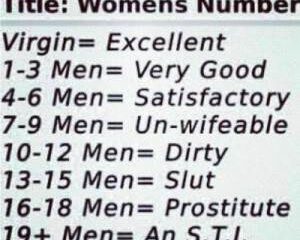
Em-URGE-ing Voices
Your urgent thoughts, urging action.

Condoms Are Great. Prop 60 Is Not.

Is POTUS the most important election tomorrow?

Friend or Foe: Believe Survivors
The Battle of Birth Control

No More Queer Confessions: "Coming Out" vs. “Letting In”

We Need To Talk About The Maternal Mortality Rate In Texas

This Intersex Awareness Day, Some Notes on the ‘I’ in LGBTQI

#DrakeShouldHaveAlreadyBeenCanceledParty

Virginity is a Myth
Virginity, a hymen, and purity. What do these things have in common? Exactly. Nothing.
Virginity is a concept that mainly regards a woman who has had sex as disposable. This is especially apparent in the chewing gum analogy where a ‘chewed up’ piece of gum, or a woman who has had many sexual partners, should be discarded for a ‘fresh’ piece of gum. Society’s fixation on preserving virginity in women and eliminating virginity in men has essentially created false meanings when it comes to sexuality.
Society has created the term “purity” as a state that mainly aligns itself to the female sex. In Jessica Valenti’s book “The Purity Myth: How America’s Obsession with Virginity Is Hurting Young Women,” she argues that chastity and abstinence-only rhetoric places a woman’s worth on her sexuality. Popular media always seems to vilify male virginity, such as in the movie The 40-Year-Old Virgin, where it shows how Andy Stitzer’s, played by Steve Carell, virginity is viewed as a tool that hinders him mentally and socially. For the male sex, it seems that virginity is like some sort of rites of passage that perpetually defines manhood and adulthood. Therefore, the concept of purity is nonexistent for the male sex.
However, the framework of virginity is used to belittle women and to “keep their legs closed” for someone special. This abstinence-only rhetoric is so detrimental that it divides women into categories of virgins and sluts. These narrow categories slut shame women who choose to explore their sexuality before marriage and, oftentimes, create hierarchies of the ideal type of woman. In many memes across social media, there are pictures that depict two types of women: the wife material and the sex material. This dichotomy views both types of women as objects who are completely dependent on men to determine their worth.
This same concept of purity applies to abusive relationships and sexual assault victims. An example comes from Elizabeth Smart, who was kidnapped and raped, says that she didn’t try to escape her captors since she felt worthless without her virginity. Aligning worth with virginity is one of the reasons why Smart felt like her life belonged to her captor. Who knows what would have happened if the rhetoric surrounding virginity wasn’t biased. This idea is also present in Toni Morrison’s novel “The Bluest Eye” where Frieda, one of the main characters, was touched by a family friend. Her mother called her “ruined” since bad touch destroyed the sanctity of her body.
These fear tactics are starting to fade today since many young women have access social media where they can see many myths surrounding virginity, sex, and purity debunked. One such fear tactic is the shedding of the hymen used as a symbol of virginity. However, research shows that any physical activity, such as sports or riding a bicycle, can destroy the hymen. Thus, the virgin slut or Madonna-whore complex dichotomy shames women for any expression of their sexuality and encourages them to believe that their bodies are sexual capital. These social categories also rank women in their own social groups where they begin to shame any sort of sexuality that does not fit the virginal norm.
Through instilling the idea of one type of woman above the other, we are constantly reinforcing slut shaming and the idea that women are objects, rather than sexual beings whose worth isn’t aligned to that of a man. By staying away from the harmful rhetoric that virginity and purity imposes onto women, we can work to help promote healthy and safe sexual activities that acknowledges that both sides of the spectrum are worthy.

